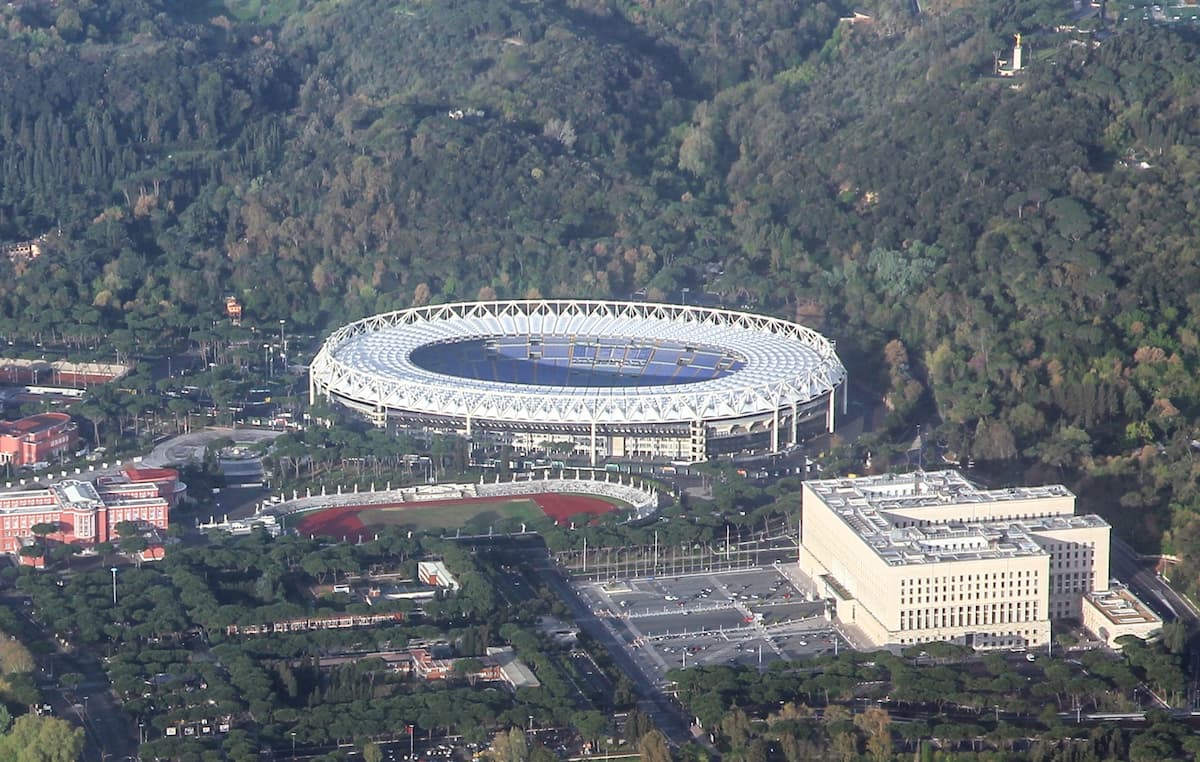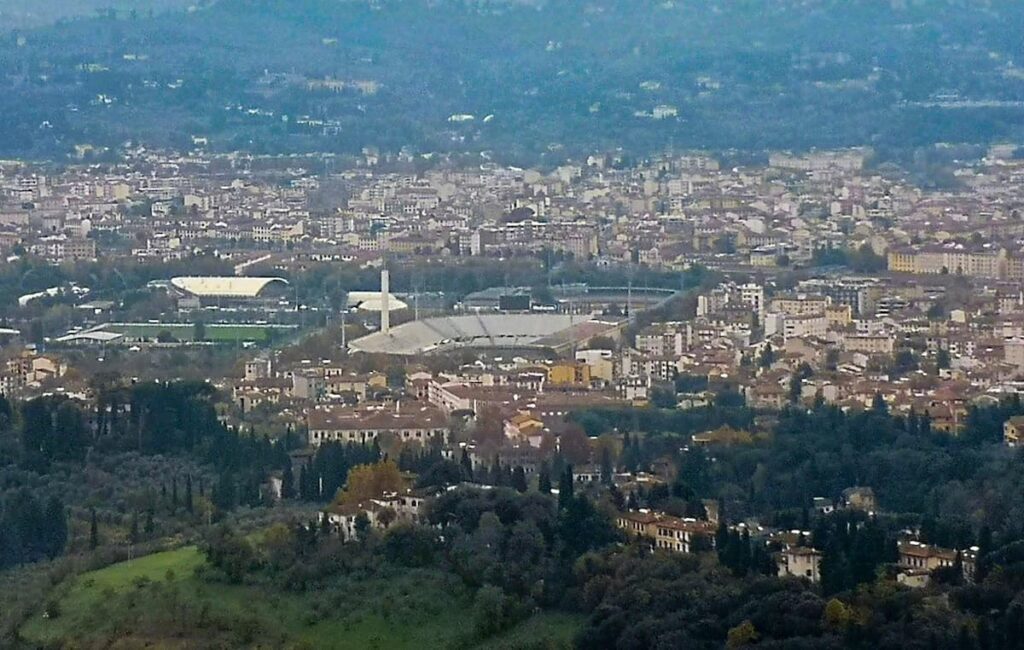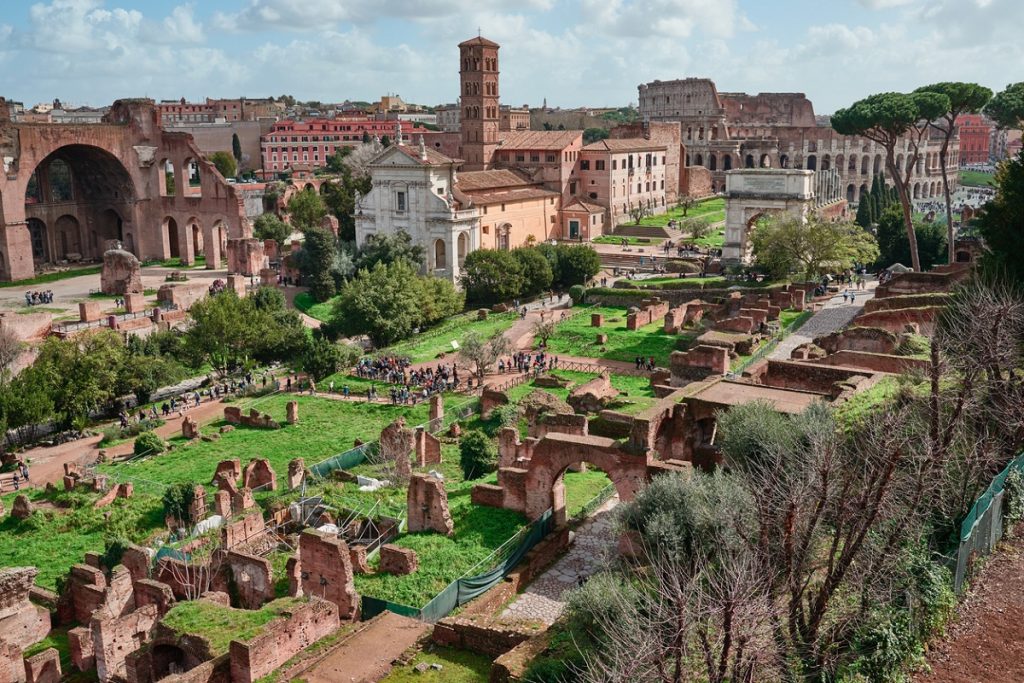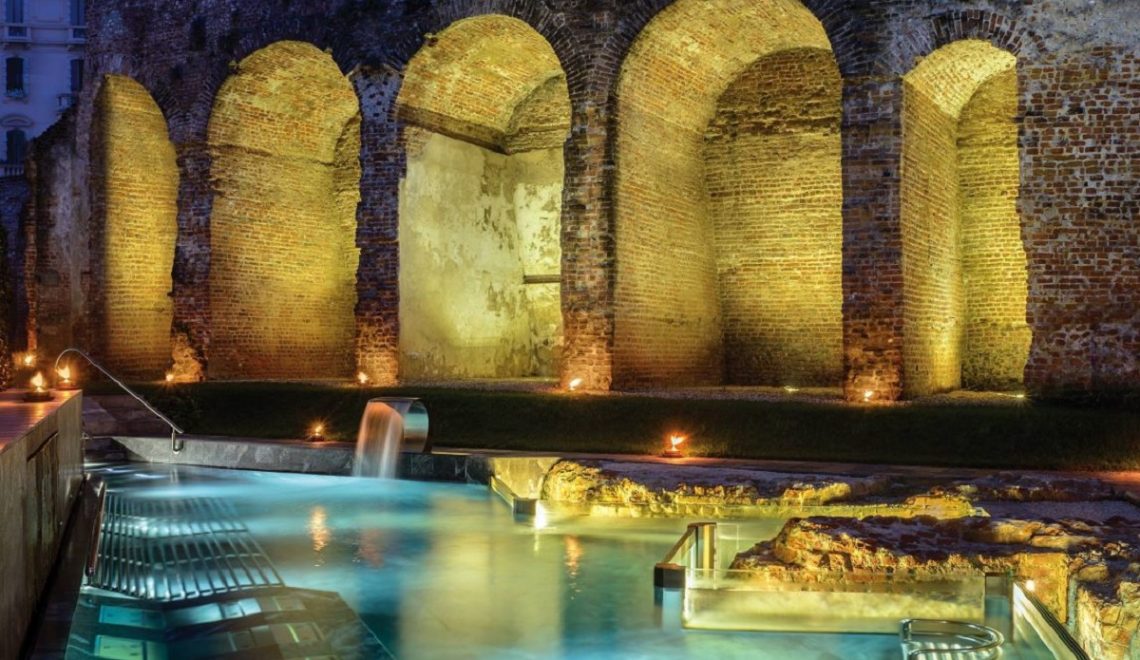
Rugby union, a sport synonymous with the British Isles, has steadily gained traction in Italy. Its journey began in the late 19th century, with the establishment of the first rugby clubs in Turin and Rome.
A Brief History of Rugby in Italy
The game first took off in Italy in the early 1900s, mainly among the upper classes and university students. Over the decades it became a popular national pastime, culminating in the formation of the Federazione Italiana Rugby (Italian Rugby Federation) in 1928. Italy’s international debut came in 1939 against France, marking the beginning of a journey that would see the Azzurri become a competitive force on the world stage.
The sport’s popularity soared in the 1980s and 1990s, particularly with Italy’s entry into the Six Nations in 2000. This pivotal moment not only raised the profile of rugby in Italy, but also fostered a passionate fan base that now fills stadiums across the country.
Iconic Stadiums
Stadio Olimpico, Rome

As the largest stadium in Italy, Stadio Olimpico stands as a monumental symbol of sport in the capital. Originally constructed for the 1960 Summer Olympics, it has undergone numerous renovations to maintain its status as a premier venue for rugby matches. The stadium is home to both rugby union and football clubs, including SS Lazio and AS Roma.
With a seating capacity of over 70,000, Stadio Olimpico provides an electrifying atmosphere during international fixtures. The blend of passionate fans and historic surroundings makes attending a match here an unforgettable experience.
Stadio Artemio Franchi, Florence
Nestled in the heart of Florence, Stadio Artemio Franchi is renowned for its distinctive architecture and vibrant atmosphere. Opened in 1931, the stadium has been a cornerstone of Italian sport for decades. While primarily known as the home ground of Fiorentina football club, it also hosts rugby matches and other sporting events.

The stadium’s capacity of approximately 43,000 ensures an intimate yet lively atmosphere during rugby games.
The venue has proudly hosted a number of international rugby union matches. On November 20, 2010, Italy faced off against Australia, ultimately succumbing with a score of 14–32. However, a remarkable moment in history occurred on November 19, 2016, when Italy triumphed over South Africa for the very first time. The match ended with a thrilling score of 20–18, marking a significant achievement for Italian rugby.
Stadio Flaminio, Rome
Constructed for the XVII Olympic Games in 1960 and inaugurated in 1959, Stadio Flaminio has sadly fallen into disrepair after years of abandonment. Once a vibrant venue, it served as the home ground for the Italian rugby union national team during the Six Nations tournament from Italy’s debut in 2000 until 2011.
In January 2010, the Italian Rugby Federation (FIR) announced ambitious plans to expand the stadium’s capacity to 42,000 in anticipation of the 2012 Six Nations Championship. However, the lack of progress on these renovations led to Italy relocating its home games from 2012. With a capacity of just 32,000 (8,000 of which are covered), it was the smallest stadium in the Six Nations lineup, prompting frequent speculation about a move to either Genoa or the larger Stadio Olimpico di Roma. The FIR expressed frustration over unfulfilled renovation promises and initially considered a move to Stadio Artemio Franchi in Florence. Ultimately, when renovations got underway in Rome, they decided to play their Six Nations fixtures at Stadio Olimpico and indicated a return to Flaminio once improvements were completed.
Originally intended to be the home of Praetorians Roma – a new team poised to represent Italy in the Celtic League – the plan later shifted, and Benetton Treviso took their place.

What to See in Rome for Free
Discover with us the most interesting things to do in rome for free. From museums to exhibitions and fascinating parts of the city: here is free sites in Rome.
Stadio Lanfranchi, Parma
Stadio Lanfranchi is a real gem located in Parma, famed for its rich culinary heritage as much as its sporting prowess. With a capacity of around 22,000, this stadium provides an intimate atmosphere that fosters a strong sense of community among fans. Home to Zebre Rugby Club, it regularly hosts Pro14 matches and serves as a training ground for aspiring players.
Stadio Monigo, Treviso

Stadio Monigo is another notable venue that exemplifies Italy’s love for rugby. Located in Treviso, the stadium has been home to Benetton Rugby since 1932. With a seating capacity of approximately 10,000, it may be smaller than others but makes up for it with an atmosphere brimming with enthusiasm.
The loyal fanbase creates an infectious spirit during matches that captivates everyone present. The proximity to players on the pitch enhances the overall experience – fans can feel every tackle and cheer every try, as if they were part of the action themselves.
Stadio Luigi Ferraris, Genoa
Known colloquially as Marassi after its neighborhood, Stadio Comunale Luigi Ferraris is a multi-purpose stadium in Genoa that has been a cornerstone of Italian sport since its opening in 1911. As the oldest stadium still actively hosting football and other events in Italy, it serves as the home for both Genoa C.F.C. and U.C. Sampdoria.
Alongside football, the historic venue has occasionally welcomed rugby matches featuring the Italian national team and has even hosted concerts.
Stadio XXV Aprile, Milan

Milan is home to Stadio XXV Aprile – a historic venue steeped in sporting tradition. Opened in 1930 and renovated multiple times since then, the stadium serves as home to CUS Milano Rugby Club and hosts various local matches throughout the season. With a seating capacity of about 15,000, it provides an accessible platform for fans eager to support their teams.
Stadio Euganeo, Padua
Located in Padua, Stadio Euganeo is a versatile stadium primarily used for football but also accommodates athletics events, concerts, and both rugby league and union matches. It replaced the historically significant Appiani Stadium.
Previously known for hosting rugby league matches since its inception – such as an encounter between Italy and Australia on January 23, 1960 – Stadio Euganeo continues to play an essential role in Italy’s sporting landscape.
Stadio Santa Maria Goretti, Catania

Stadio Santa Maria Goretti is a multi-purpose facility nestled in Catania that primarily hosts American football and rugby union matches. Home to the Amatori Catania team, the stadium can accommodate up to 10,000 spectators and is named after Saint Maria Goretti.
Stadio Tommaso Fattori, L’Aquila
Inaugurated in 1933, Stadio Tommaso Fattori serves as a multi-use venue located in L’Aquila. Currently utilized mainly for football and rugby union matches, it is home to both L’Aquila Calcio and L’Aquila Rugby teams. With a capacity of around 10,000, it remains an integral part of the local sports community.





